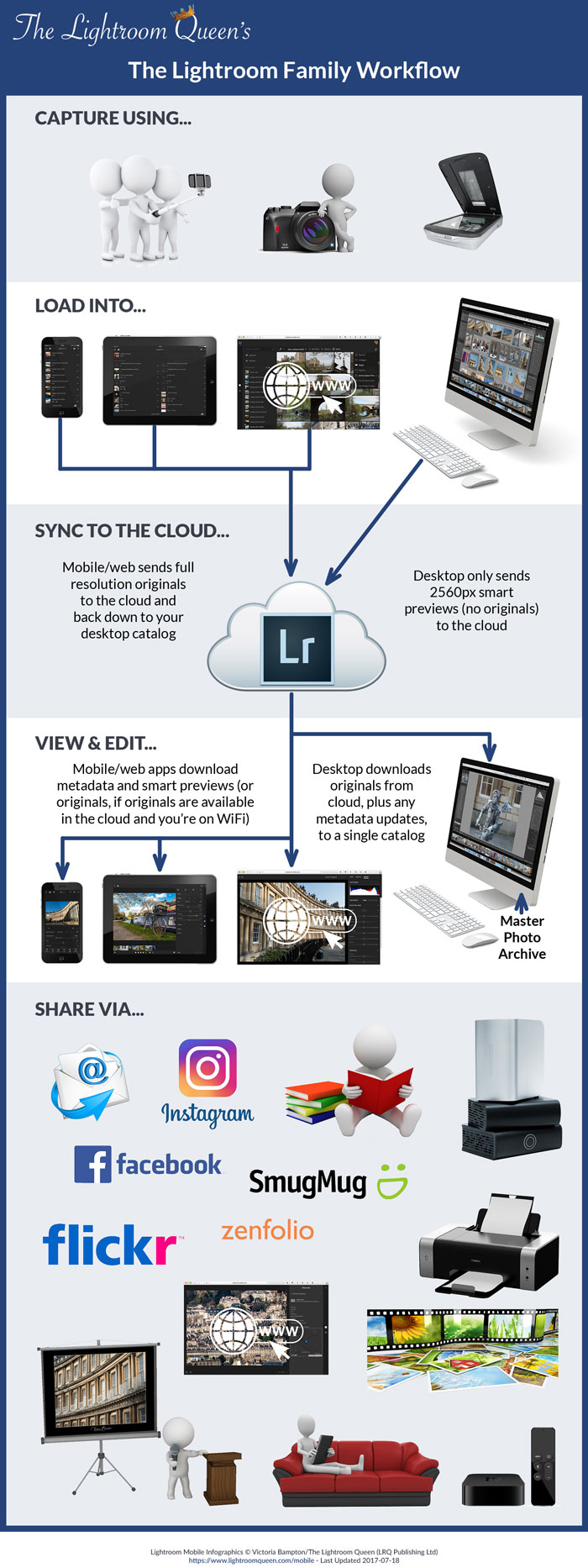More than 3 years have passed since the release of Lightroom mobile, but I know many of you still haven’t had time to investigate where the mobile apps fit in the Lightroom ecosystem, and more importantly, how they can help in your workflow, so in this series of blog posts, we’ll explore the mobile apps in detail. First, however, an overview…
The Lightroom family revolves around the Lightroom Cloud. Photos uploaded to the cloud are available on all of your devices, not just for viewing but also for editing, using the same non-destructive tools we’ve come to love on the desktop version of Lightroom.
Originals uploaded to the cloud from your mobile devices are automatically downloaded to your desktop hard drive (to be included in your main photo archive) when you next open Lightroom, saving you the time and hassle of plugging in your mobile devices.
Since Lightroom on the desktop has been around for a lot longer than the cloud-native apps, it’s more of a cousin than a direct relation. It syncs photo metadata with the cloud and automatically downloads new photos from the cloud, but it doesn’t back up full size originals to the cloud. It can’t currently be used for desktop-to-desktop sync, but that’s likely to come in a future release.
However your photos reach the cloud, don’t worry, they remain private. They’re not shared with anyone, unless you choose to make them public using the sharing features that we’ll explore in a later post.

For the next few weeks, we’re going to take a much closer look at the whole Lightroom family, including:
- what is it? (this post)
- who can use it?
- a workflow overview
- how to use the camera
- how to add photos from the device’s own camera app
- how to use Lightroom mobile on vacation
- how to view photos in Grid view
- how to flag & star rate photos
- how to add metadata in Info View
- how to organize photos into collections
- an overview of editing
- how to crop photos and apply presets
- how to edit photos using sliders
- how to do selective editing with gradients
- how to do selective editing with the brush
If you’re keen to get started in the meantime, you can download the full set of infographics right now. They’re yours to download absolutely FREE when you sign up for my monthly Lightroom newsletter using the form below. (Don’t worry, I won’t share your email address with anyone else. You can read previous issues of the newsletter here.)
[mc4wp_form id=”19061″]

Do I have to enable copyright to my photos within LR in order to keep my photos private from Adobe sharing my content for their gain? This is not a loaded question or a statement but a real concern with the way big corp treats the sheep these days
No, your photos remain entirely yours. If you choose to share them, that’s entirely up to you. Unlike many free services, where you are the product, Adobe’s more interested in selling you software and services.
Is there a way to view comments? I can view them on the PC app and the web app, but I cannot find them on the Android mobile app.
I don’t think they’ve added that to the Android app yet Gary.
I am a Lightroom user only
I Store via SmugMug but can I store in Lightroom and distribute to emails via a folder or otherwise?
I don’t quite understand your question Charles… can you tell me a little more about what you’re trying to accomplish?
Love your graphic in the 1st LR Mobile article.